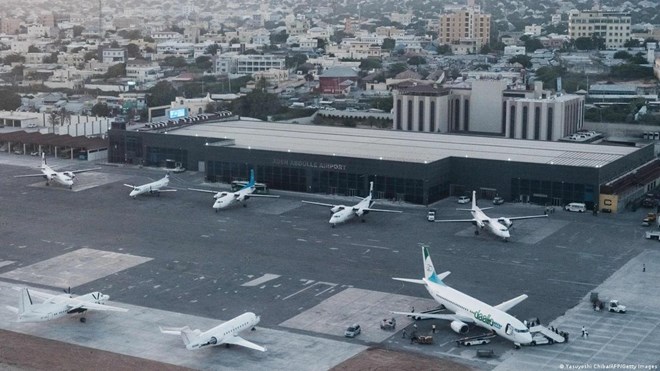
Harun Maruf
Thursday January 26, 2023

WASHINGTON — The Somali airspace has regained its Class A classification after more than 30 years, the International Air Transport Association said.
IATA confirmed the reclassification of the Mogadishu Flight Information Region airspace in a statement on Wednesday.
Class A airspace is the sky above the base altitude of about 24,500 feet (7,467 meters) above mean sea level, according to IATA. In it, all flights must be cleared by air traffic control, which is responsible for maintaining the correct separation between aircraft, which required the Mogadishu FIR to install new equipment.
IATA said the move will significantly improve safety in the region and enhance efficiency.
The reclassification of Somali airspace to Class A took effect at 00:01 a.m. local time Thursday (16:01 EST), Somali officials said.
Uncontrolled airspace for decades
The collapse of the state in Somalia in 1991 ended the country’s control of its airspace. That control had been run from Nairobi in neighboring Kenya from 1992 until June 2018, when the Somali government transferred management of the airspace to Mogadishu. Somalia airspace had been classified as Class G, or uncontrolled airspace, for decades.
The Somali government has welcomed the reclassification.
“It [is] welcoming news. We will be celebrating,” said Ahmed Moallin Hassan, director general of Somali Civil Aviation Authority.
Asked what the reclassification of airspace means for Somalia, Hassan said the Civil Aviation Authority will be providing more services to pilots.
He said that under Class G airspace designation, the aviation authority was providing advisory services to the pilots.
“But now since the airspace class has changed from uncontrolled airspace to controlled space, the service we are providing changed to air traffic control services. Now we will be instructing the pilots, and we will be using words like climb, descend, clear to land, clear for takeoff,” he said.
Good for employment, safety, bottom line
Hassan also said the classification upgrade will increase revenue for Somalia. Most countries charge airlines for the use of the airspace and air traffic control, and each country calculates charges differently.
About 400 international flights use Somali airspace a day, and the change to Class A airspace has the potential to increase traffic to as many as 600 flights a day, Hassan said. He said current annual revenue is $22 million, and they expect that to increase to $34 million.
“It means that the airspace has gone into significant change, it will increase revenue, job opportunity and overall safety of airspace will be enhanced,” he said. “That will attract international airlines that are currently avoiding Somali airspace."
IATA said reclassification of the airspace, and the operational resumption of air traffic control in the Mogadishu FIR, has been made possible with the installation and commissioning of modern radio navigation and other technological infrastructure, and follows a successful trial, which began last May.
“The upgrade of air traffic management and improved navigation and communication infrastructure will enhance situational awareness along an increasingly busy air corridor and its intersections with routes linking many of the world’s regions,” said Kamil Al-Awadhi, who is the IATA’s regional vice president for the Middle East and Africa.
In 1991, the national flag carrier, Somali Airlines, ceased operations. Despite promises from successive governments to revive the airline, that has not been realized to date. But just as private companies filled the void in telecommunication, water and electricity services, private airline companies have stepped in to provide domestic services and flights to regional destinations in East Africa and Gulf countries.